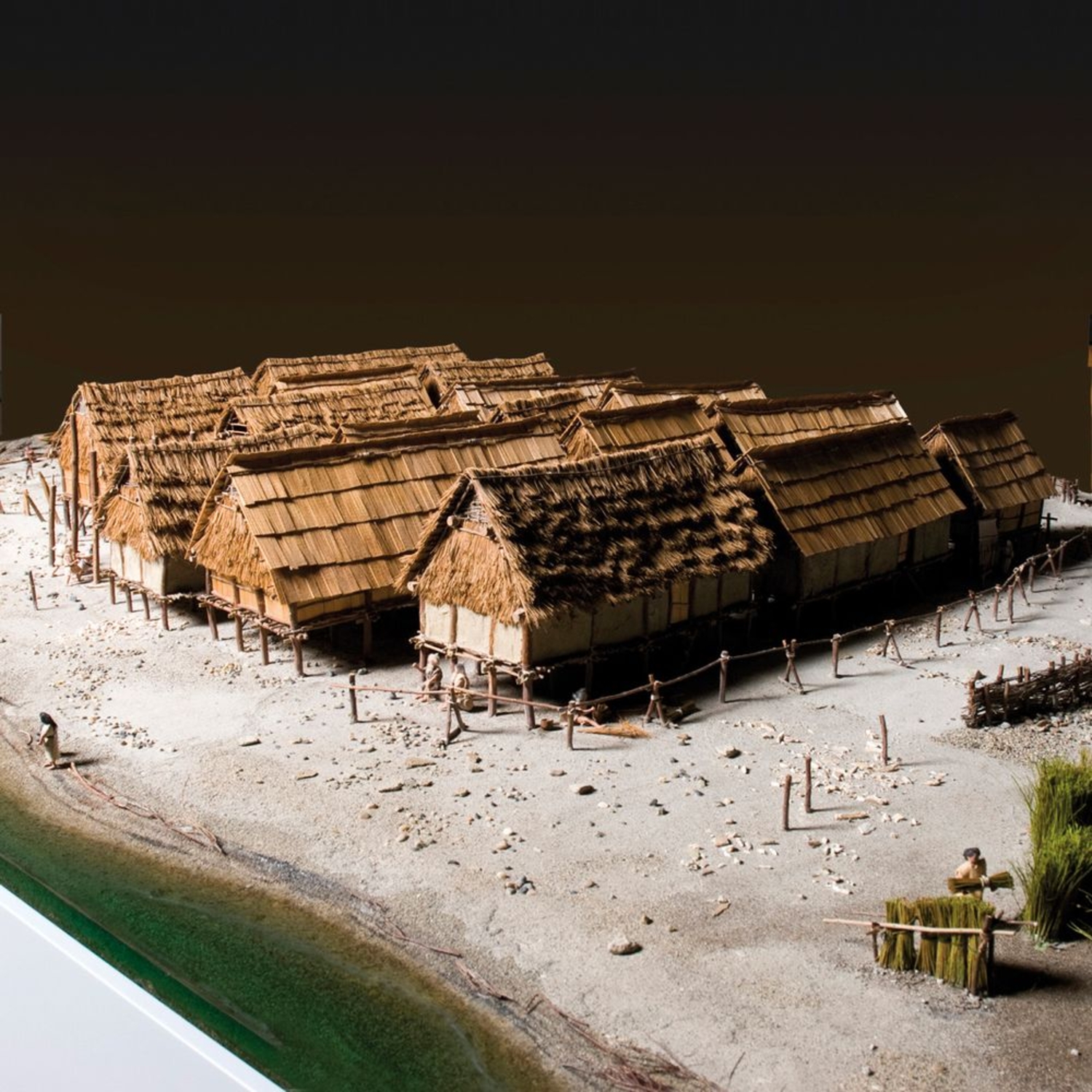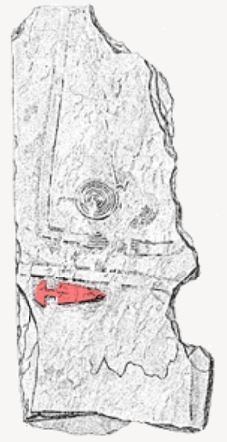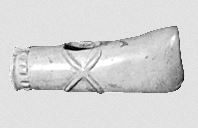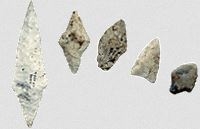- Home
- The village
- An unequal society
- Social markers
Flint daggers
Most flint tools were locally produced, with some exceptions. At Chalain and Clairvaux several very long daggers from the regions of Forcalquier (Alpes-de-Haute-Provence) and Grand-Pressigny (Touraine) were found. These worked and retouched blades began to appear as of 3040 BCE, but in very small quantities. The advanced technical know-how needed to produce them means that they are stone counterparts of the first copper daggers, which appeared slightly earlier in Italy and in Languedoc with the development of local smelting techniques.
During the 30th century, the number of these daggers was still quite limited in the Chalain villages. It is probable that not every man could own one, thus they were indicators of higher social status.
In addition, the daggers could also have served as ceremonial tools for opening the harvest season. Some of them have marks indicating that they were used to cut cereals—not the usual method at a time when ears of grain were harvested by ripping them out and leaving the straw underfoot.
Flint daggers from Grand-Pressigny.
Chalain, previous excavations.
Archaeological Museum, Lons-le-Saunier.
Photography : P. Lopinet.
Anthropomorphic stele from Sion, Valais (Switzerland).
Drawing by S. Favre, 1986.
Axes
Other objects can also be used to show differences in status between men. Often these are useful everyday tools (axes, sledgehammers, etc.), which have been radically reshaped through polishing and which often bear remarkably decorations. These tools were overdetermined to underline their prestigious social function: showing the status of "great men".
Ceremonial antler axe handle.
Chalain, previous excavations.
Archaeological museum, Lons-le-Saunier.
Photography: R. Négri.
Ceremonial antler ax-hammer.
Chalain 3, 31st century BCE.
Photography: P. Pétrequin.
Flint arrowheads.
Chalain 19, 31st and 30th centuries BCE.
Photography: P. Pétrequin
Arrows
During the Neolithic period, the use of violence, fights and war was largely developed for the benefit of the great men. The bow and arrow allowed the male principle to be emphasized. These forms of social indicators were expanded to include daggers and appeared on steles dedicated to the gods. As the isolated house at Chalain 19 shows, these attributes were removed from their religious context in order to show differences in status and to consolidate the dominant position of certain personalities. At the beginning of the 3rd millennium, this appropriation of sacred values was pushed even further: signs of inequality, probably hereditary, are clearly inscribed on monumental anthropomorphic steles in the upper Rhone valley and in the Val d'Aoste.
Finally, ornamentation was also used as a status indicator.
Anthropomorphic stele from Sion, Valais (Switzerland).
Drawing by S. Favre, 1986.






